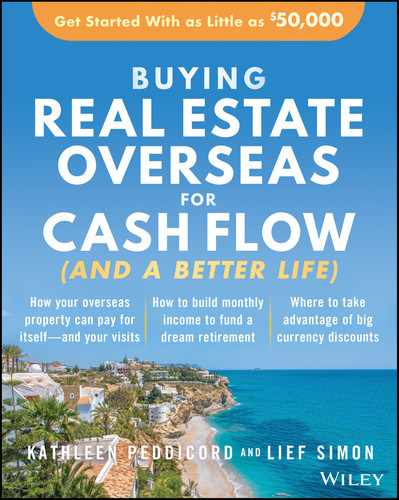5
Consider Local Financing Options (If They Exist) and How You Can Qualify
Lief used other people's money (OPM) to launch his real estate investing career in the United States, and we were able to borrow for our first purchases overseas, as well.
For his first investment, in Chicago, Lief negotiated a 98% loan-to-value (LTV) loan from a local bank running a special offer, and we bought our house in Ireland with a 95% LTV financing from Bank of Ireland. While our second overseas property investment—a preconstruction condo on the coast of Spain—wasn't financed by a bank, it was made using developer terms that allowed us to pay just 5% down and then another 25% over two years, with the final 70% not due until completion of the unit.
Bank financing in the United States comes with an additional cost if your LTV is greater than 80% in the form of private mortgage insurance (PMI). Ask Lief how he got out of paying PMI for his Chicago purchase if you meet him at a conference sometime.
Private mortgage insurance isn't a requirement when borrowing to buy property in most markets overseas, but a local life insurance policy naming the lending bank as the primary beneficiary if you die before the mortgage is paid off is. You can buy the policy through the bank or from a third party, but a current life insurance policy in your home country won't qualify. More important, most life insurance companies around the world will insure you only up to age 70 or 75. That limitation restricts the mortgage term if you're older than 50 when applying for financing. A 65-year-old, for example, can qualify for a 10-year loan at best. Don't forget the cost of the life insurance when calculating your return on investment; it can take a bite out of your net yield.
Even if you're 40 or younger, don't expect a 30-year mortgage. These are uncommon outside the United States. Twenty years is typical; 25 years can be possible. Likewise, fixed-rate mortgages, with the rate fixed for the entire term of the loan, aren't typical. Expect variable-rate financing. In France, the monthly payment for our variable-rate mortgage changed only if the interest rate increased enough to extend the life of the loan more than two years beyond the original term. At one point, that happened, and our monthly payment increased.
If you're buying in a market where financing is an option for foreign buyers and you want or need a mortgage, try to get pre-approved by a bank before you begin shopping for a property to buy. This way you'll be confident of your purchase budget as well as the mortgage costs, including the monthly life insurance expense.
Local financing for nonresident foreign buyers is possible in Panama, the Dominican Republic, Portugal, France, Spain, Italy, and elsewhere in Europe. We were able to get financing in Ireland because we were resident and earning income in the country. Being able to show one or both of those things makes a big difference in your eligibility for financing; however, you aren't likely to be able to do this most places (or maybe anyplace) you want to invest.
In some markets where it's possible to borrow locally as a nonresident foreign buyer, the terms make the idea unattractive. Banks in Belize and Nicaragua, for example, offer financing to foreigners but at double-digit interest rates.
In Europe, on the other hand, interest rates are extremely low, thanks to negative central bank rates. It can be possible to qualify for a variable-rate mortgage with a starting interest rate as low as 2% or less (basically the bank's margin on lending).
Most banks around the world reference metrics similar to those used by U.S. banks when qualifying a borrower. They look at your overall debt-to-income ratio as well as the payment amount for the specific mortgage-to-income ratio. Income is more important than assets, and the easiest way to prove your income is by showing your tax return. However, if your income is from passive investments, the bank may require proof beyond your tax return—a signed statement from your tax accountant, for example. If you're self-employed, you'll have to provide additional documentation. Panama banks, which are accustomed to lending to American buyers, might also ask for a current report from a U.S. credit bureau.
In addition to asking for lots of documentation to confirm the financial information you're providing, banks overseas mitigate default risk by limiting LTV ratios for nonresident foreign buyers. The best you might typically hope for is 70%; 50% to 60% is most common, meaning you'll likely need to put down 40% to 50% when financing a property purchase overseas through a local bank.
The good news is that some banks allow you to include projected rental income as part of your personal income figures when running debt-to-expense ratios. If you're looking for a mortgage in Panama, the bad news is that banks consider credit card limit as debt even if the card has zero balance. A colleague in Panama had to pay off and close all her credit cards to qualify for a mortgage. After the mortgage had been issued, she had no problem getting new credit cards, including one from the bank that had financed her property purchase. Go figure.
Idiosyncrasies like these are why it's best to speak with a bank before you even begin your property search if you hope to use bank financing for the purchase.
However, bank financing isn't your only option …
